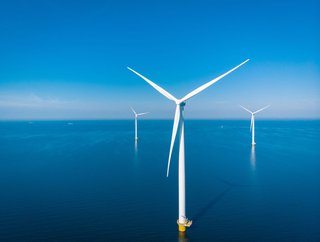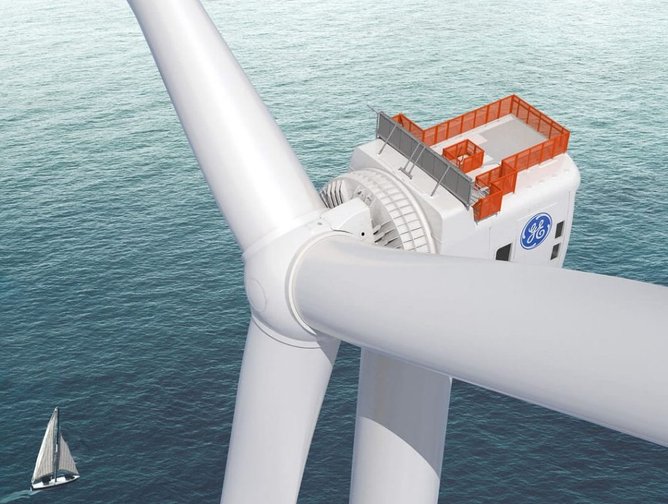Offshore Wind Growth Continues in Pursuit of Climate Targets

Worldwide, we’re fortunate that renewable energy is available in abundance — it’s just a case of tapping into them in the most efficient and responsible way possible.
Thankfully, thanks to its almost infinite and naturally replenishing nature, renewable energy capacity to provide electricity is only increasing. According to Statista data, as of 2023, wind power accounts for more than 7% of all electricity generation globally, up from just 1.64% in 2010.
McKinsey research suggests global installed offshore wind capacity is expected to reach 630GW by 2050, up from 40GW in 2020. This is as the International Energy Agency (IEA) declares that onshore wind farms account for 93% of installed wind capacity, compared to just 7% for offshore installations.
In 2022, 8.8GW of new offshore wind capacity was added to the grid, with global installed capacity reaching 64.3GW, with the Global Wind Energy Council highlighting this growth as a new frontier for offshore wind in its 2023 Global Offshore Wind Report. Its analysis shows that more than 380GW of offshore wind capacity, across 32 markets, is predicted to be added in the next decade.
More processing power needed to model larger, more complex offshore wind projects

Youwind Renewables, which provides web-based solutions for optimising early-stage offshore wind development, notes how as offshore wind projects continue to grow in scale and complexity — particularly across Europe — developers need more processing power to accelerate these initial steps.
And with the size and quantity of offshore wind projects increasing at a rapid scale, development zones are becoming more congested — meaning there is an added complexity to siting and layout decisions.
Anna Rivera, Founder and CEO of Youwind said: “As the offshore wind industry increases in scale and complexity, anticipating the evolving needs of the market is key to streamline project development processes, minimise risks and maximise project yields and revenues. Our tools give users the processing power to drastically speed up the early-development phases, while handling the latest, most accurate data to ensure maximum profitability.”
Youwind provides web-based tools that it says bring much-needed processing power to the market, allowing developers to run comprehensive, bankable simulations for wind farms as large as 1.2GW in under one minute. A similar time frame applies to giant, multi-phase projects of more than 3.5GW, with simulations available in just a few minutes — around eight to 10 times faster than other solutions available.
The largest offshore wind farms in the world

Located off UK shores, Dogger Bank Wind Farm’s three phases together make up the world's largest offshore wind farm. Covering an area similar to Greater London and twice the size of New York City, when fully complete — hoped by 2026 — its 3.6 GW capacity will be supported by 277 offshore turbines capable of producing enough energy to power the equivalent of six million British homes each year. It is the product of a joint venture, with the site developed by UK-based SSE Renewables, in partnership with Norway’s Equinor and Vårgrønn.
Alongside Dogger Bank, the UK is home to a plethora of other offshore wind projects, seeing seven of the top ten largest offshore wind farms off its shores. One of those being Hornsea Offshore Wind Farm, which has a combined capacity of 2.6GW across 300 square miles and powers in access of two million homes on the UK mainland. When two more phases are added, its capacity will grow to 6GW – enough to power 4.5 million homes.
Hai Long is the largest offshore wind project in Taiwan and Asia-Pacific with the 1,022MW offshore wind project positioned 45nm off Taiwan's west coast. There are just two operating offshore wind farms in US waters, the largest being South Fork Wind Farm off Rhode Island. Vineyard Wind – southwest of Martha's Vineyard — is set to be operational this year and have a capacity of 806MW.
Offshore wind farms could be the future of energy for Latin America, as three decades after the world’s first offshore wind farm was built, has no such facility.
*******************
Make sure you check out the latest edition of Energy Digital Magazine and also sign up to our global conference series - Sustainability LIVE 2024.
*******************
Energy Digital is a BizClik brand.
- How Can UK Offshore Wind Industry Find 70,000 New Recruits?Renewable Energy
- How Siemens Gamesa Became a Global Wind Power LeaderRenewable Energy
- Earth Day 2024: Renewable Energy Key To Sustainable FutureSustainability
- Insight Into Unique Project for Floating Offshore Wind FarmRenewable Energy






